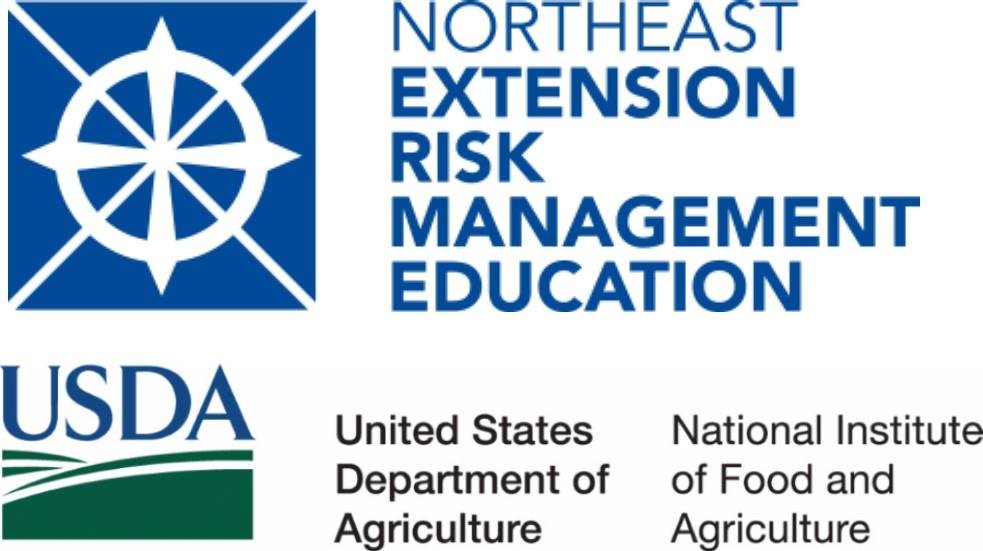From Surviving to Thriving: Strategies for Urban Farm Success
Authors: Neith Little, Kim Rush Lynch, Dale Johnson, Nicole Cook, and Ginger Myers
Authors: Neith Little, Kim Rush Lynch, Dale Johnson, Nicole Cook, and Ginger Myers
This material is based upon work supported by USDA/NIFA under Award Number 2015-49200-24225

The logo for the UMD Extension Urban Ag program was designed by Trish Moore. The graphic design and layout of this guidebook was done by Susan Barnes.
Development of this guidebook included focus groups using methods reviewed by the University of Maryland, College Park, Institutional Review Board, approved under project number 1218631-1. We wish to express our profound gratitude to the farmers and growers that took the time to share their knowledge and experience.
We also wish to thank the following people for their input, advice, and constructive feedback: Sarah Everhart and Megan Todd, Agricultural Law Education Initiative; Mariya Strauss, Farm Alliance of Baltimore; Margaret Morgan-Hubbard, ECO City Farms; Maya Kosok, Hillen Homestead; Farmer Chippy, Plantation Park Heights Urban Farm; Farhad Ahmad Siddiqi, ECO City Farms; Denzel Mitchell, agriculturalist; Stephanie Freeman, Relish Market LLC; Kate Lee, DC Greens; Atiya Wells, Backyard Basecamp; Doug Adams, New Brooklyn Farms; Niraj Ray, Cultivate the City; Rebecca Bradley; Deb Smith, Refuge Garden and Filbert Street Garden; Dylan Moran, Civic Works, Gwen Kokes, Civic Works; Jordan Bethea; Mike Davis, Rockville, MD.; Anthony Nathe.
From Surviving to Thriving: Strategies for Urban Farmer Success is a product of the local, regional, and state Extension faculty of the University of Maryland College Park Extension Program and the University of Maryland Eastern Shore 1890 Extension Program. This book is intended to assist urban farmers, growers, and their advisers in managing risk and planning for the increased success and stability of their urban agriculture ventures.
The information in this guidebook is for educational use. The guidebook includes introductory information about some of the regulations relevant to urban agriculture. A reasonable effort was made to ensure the accuracy of the information in this guide. However, content and interpretation of laws and regulations are subject to change. The effect of future legislation and interpretation cannot be predicted. This guide is not intended as legal advice. Each person should consult the responsible local, state, and federal agencies and an attorney before using this information to engage in business activity.
Material for this guide was researched and written by Neith Little, Kim Rush Lynch, Dale Johnson, Nicole Cook, and Ginger Myers, Extension field faculty at University of Maryland Extension (UME). Graphic design and layout were done by Susan Barnes, UME Western Maryland Research and Education Center. The logo for the UMD Extension Urban Ag program was designed by Trish Moore, UME Baltimore County Office.
Mention, visual representation, or referred reference of product, service, manufacturer, or organization in this publication does not imply endorsement by the authors or any project partners. The exclusion does not imply a negative evaluation.
Neith Little
Editor Extension Agent, Urban Agriculture
University of Maryland Extension - Baltimore City Office
6615 Reisterstown Road Suite 201
Baltimore, MD 21215
410-856-1850 x123
nglittle@umd.edu
The University of Maryland, College of Agriculture and Natural Resources programs are open to all and will not discriminate against anyone because of race, age, sex, color, sexual orientation, physical or mental disability, religion, ancestry, or national origin, marital status, genetic information, or political affiliation, or gender identity and expression.
Los programas del Colegio de Agricultura y Recursos Naturales de la Universidad de Maryland están abiertos a todos y no discriminará contra nadie debido a raza, edad, sexo, color, orientación sexual, discapacidad física o mental, religión, descendencia, origen nacional, estatus matrimonial, información genética, afiliación política, o identificación y expresión de género.